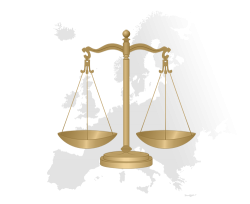OLG Brandenburg - 1 U 69/20
| OLG Brandenburg - 1 U 69/20 | |
|---|---|
| Court: | OLG Brandenburg (Germany) |
| Jurisdiction: | Germany |
| Relevant Law: | Article 82 GDPR |
| Decided: | 11.08.2021 |
| Published: | |
| Parties: | |
| National Case Number/Name: | 1 U 69/20 |
| European Case Law Identifier: | |
| Appeal from: | LG Potsdam 1 O 241/18 |
| Appeal to: | Not appealed |
| Original Language(s): | German |
| Original Source: | OLG Brandenburg (in German) |
| Initial Contributor: | Frederick Antonovics |
The Higher Regional Court of Brandenburg held that a claim for damages can only arise from Article 82 GDPR if concrete damage has been sufficiently presented. It rejected an appeal by a defendant who sought damages for an infringement of the right to his own image.
English Summary
Facts
A defendant appealed a first instance decision by the Regional Court of Potsdam. In that case, they made an unsuccessful counterclaim for set-off of damages they owed on account of the unauthorized further use of their photograph and name in connection with the plaintiff's Internet presence.
Holding
The Higher Regional Court of Brandenburg held that a claim for damages can only arise from Article 82 GDPR if concrete damage has been sufficiently presented by the claimant. It rejected the appeal and stated that such a claim had no material prospect of success in this case. It justified its approach by reference to a decision by the Higher Regional Court of Bremen, which followed the same legal approach regarding an Article 82 GDPR claim.
Comment
Share your comments here!
Further Resources
Share blogs or news articles here!
English Machine Translation of the Decision
The decision below is a machine translation of the German original. Please refer to the German original for more details.
Section 544 ZPO (1) The non-admission of the appeal by the appellate court is subject to the complaint (non-admission complaint). (2) The non-admission complaint is only admissible if 1. the value of the appeal to be asserted with the appeal exceeds 20,000 euros or 2. the appeal court the appeal as (3) 1The non-admission complaint must be submitted to the appeal court within an emergency period of one month after delivery of the complete judgment, but no later than six months after the judgment was announced. 2A copy or certified copy of the judgment against which the appeal is to be lodged should be submitted with the notice of appeal. (4) 1The complaint must be submitted within two months after delivery of the complete judgment, but no later than seven months to justify the reasons after the judgment has been pronounced. 2§ 551 para. 2 sentences 5 and 6 apply accordingly. 3The reasons for admission (Section 543, Paragraph 2) must be set out in the justification. (5) The appellate court gives the complainant's opponent the opportunity to comment. (6) 1The appellate court decides on the complaint by way of a resolution. 2The decision should be briefly justified; A justification can be dispensed with if it would not be suitable to help clarify the conditions under which a revision is to be permitted, or if the complaint is allowed. 3The decision on the complaint is to be served on the parties. (7) 1The filing of the complaint inhibits the legal force of the judgment. 2§ 719 Paragraphs 2 and 3 apply accordingly. 3When the appeal court is rejected, the judgment becomes final. (8) 1If the appeal against the non-admission of the appeal is allowed, the appeal procedure is continued as an appeal procedure. 2In this case, filing the complaint against admission in due form and in due time is deemed to be the filing of an appeal. 3When the decision is served, the time limit for the reasons for the appeal begins. (9) If the appellate court has violated the complainant's right to be heard in a significant way, the court of appeal may, in deviation from paragraph 8, in the decision granting the appeal, set aside the judgment under appeal and start the legal dispute with a new one Refer the hearing and decision back to the court of appeal.

